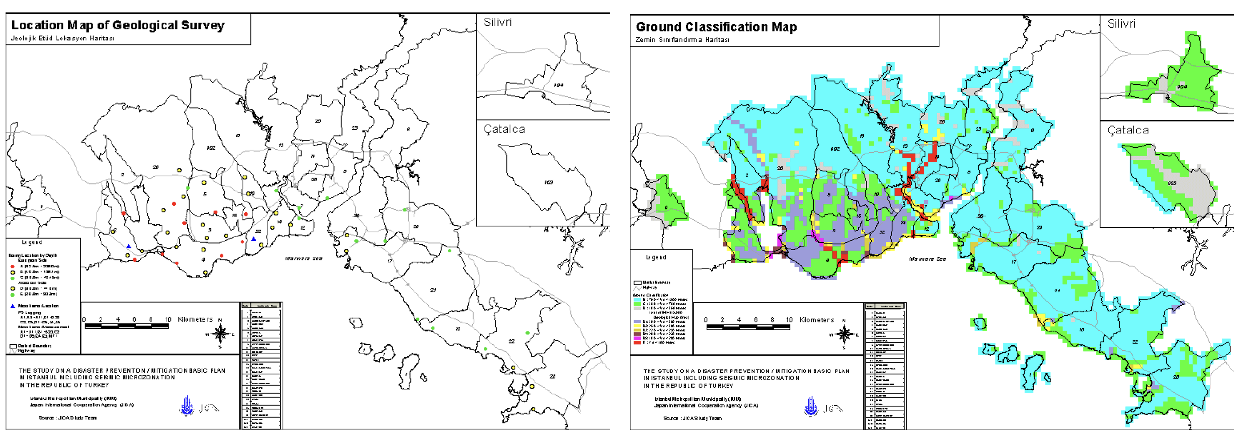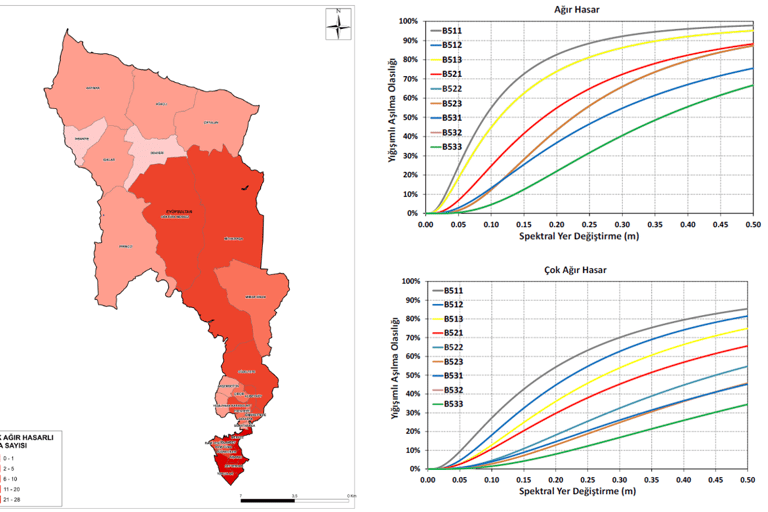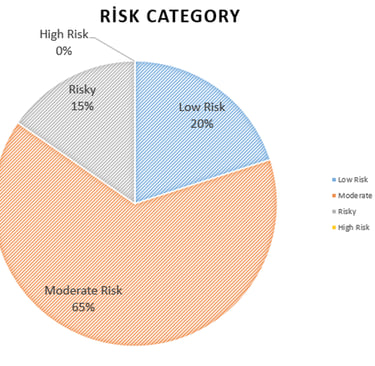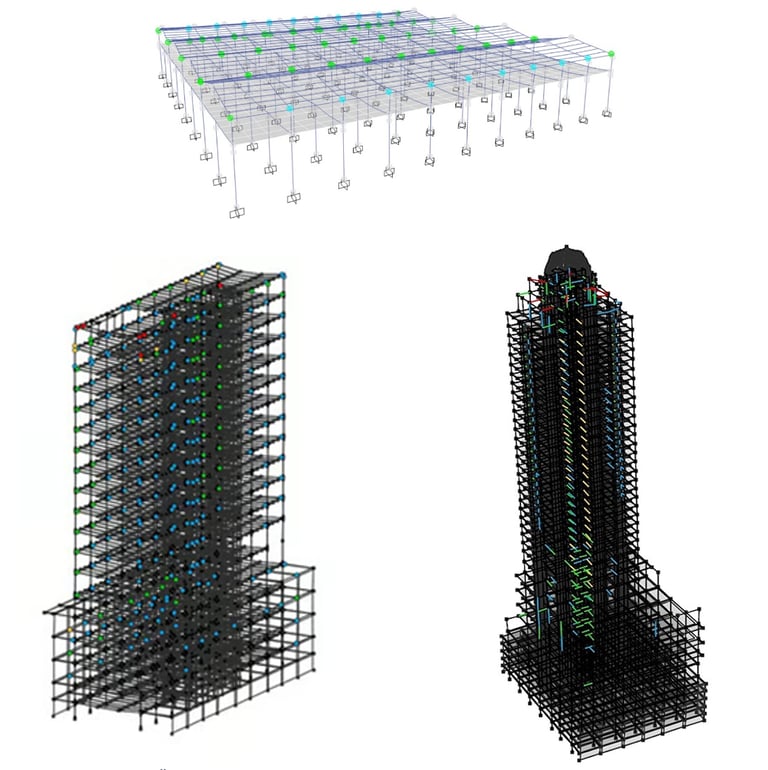Risk Engineering - Evaluation of the Safety of Our Structure(s)


Risk Engineering has different meanings depending on the industry. In the field of civil engineering, risk can be defined as the task of determining the seismic behavior and safety of a structure under the expected ground motion, regardless of the term used (such as structural or earthquake engineering) – at least within the context of this article. With this article, as Revzen Engineering, we aim to outline the services offered for determining the earthquake safety of a structure or structures, while also clarifying terms that may cause confusion in the services discussed.
First, when listing the factors that affect a structure's behavior (performance) during an earthquake, it depends on a well-designed structural system, the quality of materials used (such as concrete, reinforcement, structural steel, etc.), the distance of the structure from fault lines, the soil conditions the structure sits on, external influences encountered during the structure's lifespan, and many other factors that could be added. When considering these factors, we’ve listed elements like soil, materials, and faults, which inherently carry uncertainties. Additionally, as engineers, our goal is to design safe structures by making reliable calculations with materials whose properties we can never fully know, against forces that we also cannot know precisely. So, how do we achieve results with sufficient accuracy, despite these uncertainties, when evaluating or designing structures, and what methods do we use?
To answer the question, we must first determine whether we are dealing with just a single structure or a stock of buildings in a district, city, or country. The methodology should be clarified based on the scope of the study and the purpose. If we are dealing with an unknown number of buildings, a study with more assumptions and probabilistic calculations can be used to assess the situation and guide decision-makers toward a general solution. However, if there are relatively fewer buildings, a more targeted approach, with fewer assumptions and probabilistic calculations, can be applied directly to those specific structures. The use of general and specific approaches interchangeably is certainly possible when there are no limitations on time, budget, or workforce. A study that results in fragility/vulnerability curves after several steps can be considered general, while an observational assessment or earthquake performance analysis performed on individual buildings is referred to as a targeted approach. Before delving into the general and targeted solutions, let's try to explain the importance of the purpose and scope through different geological studies.
For example, the geological survey location map and soil classification map prepared within the scope of the Istanbul Earthquake Master Plan [1] are shown below. In this project, a 1/5000 scale soil classification map was created using approximately 2000 boreholes, nearly 1000 seismic refraction tests, and 263 microtremor data, with a sampling interval of 500x500 meters and based on certain assumptions. For instance, the soil class at a different point from the surveyed locations on the Location Map may not match exactly with the soil class at the same point on the classification map based on the results of field tests. The created soil classification map is sufficient to serve as background data for a variable used in large-scale analyses, but for a specific structure at any given coordinate, it provides only a rough estimate of the soil characteristics. Soil investigations specific to the related building must be carried out.


Şekil 1. Geological Survey Location Map (a), Soil Classification Map (b)
a
b
As Revzen Engineering, the studies conducted for assessing the earthquake safety of structures can be grouped as follows:
• Fragility/Vulnerability Studies
• Observational Evaluation Studies
• Seismic Performance Assessment
Custom methodologies can be developed based on the job description, depending on the needs and requirements.
1. Fragility/Vulnerability Studies
As mentioned in previous paragraphs, based on a methodology tailored to the building stock and the purpose of the study, earthquake damage estimates and fragility curves for the building stock are derived. This can be done using deterministic or probabilistic methods according to a predefined earthquake scenario or by considering the existing soil and building inventory through software tools (e.g., ELER).


Şekil 2.Mw=7.5 Scenario earthquake Heavily Damaged Building Distribution [2] (a) and Reinforced Concrete Frame Building Fragility Curve [3] (b)
a
b
These studies, based on analytical work, empirical and statistical models, and certain assumptions, provide approximate average values. It is inevitable that the outcomes of an actual ground motion will differ. Additionally, the results presented in the mentioned methods cannot be used as a performance analysis for individual buildings.
2. Observational Evaluation Studies
As Revzen Engineering, we offer observational assessment services as a rapid alternative evaluation method for cases where a comprehensive assessment is not possible. This method is based on international standards such as ASCE 41, FEMA 154, or academic papers like PERA.
In summary, the developed assessment process includes the following steps:
· Determination of concrete compressive strength by rebound hammer test
· Determination of reinforcement arrangement and spacing by concrete scanning (Hilti PS85 or Bosch D-Tech 120)
· Determination of local site condition by seismic refraction (shear wave velocity) test
· Detection of removed or added structural elements with structural surveying
· Preparation of report based on site observations and tests according to local and international guide lines.
In conclusion, the structure(s) under review are evaluated in light of all collected data, and their seismic risk level is determined. The following visual illustrates the distribution of risk categories identified as a result of observational assessments applied to a specific building stock.


Şekil 3.Risk Category Distribution of Buildings as a Result of Observational Evaluation
You can access a more detailed presentation from the button.
3. Seismic Performance Assessment
Seismic Performance Assessment is the process of verifying whether a building meets the targeted performance for the earthquake level defined in the latest Turkish Building Earthquake Code. In other words, it involves determining the building's damage state or reliability in a potential earthquake. If the building is found to be insufficient, reinforcement projects are designed based on the deficiencies identified through this analysis.
The steps of a performance analysis process can be summarized as follows:
• Project review or survey work to detect modifications made
• Material testing
• Soil testing
• Reinforcement detail inspections (Detailing checks)
• Selection of suitable earthquake records
• Creation of analytical models and analyses
• Reporting


Şekil 3.Damage Distribution in the Structure as a Result of Sample Performance Analysis Earthquake Record
Click on the link for a sample performance analysis.
[1] İstanbul için Deprem Master Planı, İstanbul Büyükşehir Belediyesi Planlama ve İmar Dairesi Zemin ve Deprem İnceleme Müdürlüğü, İstanbul, 2003.
[2] İstanbul İli Eyüp İlçesi Olası Deprem Kayıp Tahminleri Kitapçığı, İBB ve Boğaziçi Üni. Kandilli Rasathanesi ve Deprem Araştırma Enstitüsü, İstanbul, 2020.
[3] İstanbul İli Olası Deprem Kayıp Tahminlerinin Güncellenmesi Projesi, Boğaziçi Üni. Kandilli Rasathanesi ve Deprem Araştırma Enstitüsü Deprem Müh. Ana Bilim Dalı, İstanbul, 2010.

